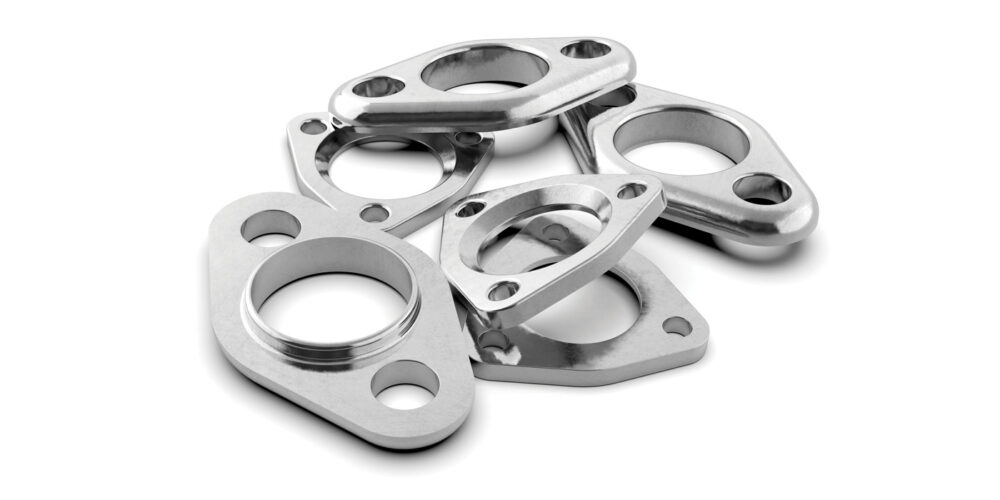Gaskets and seals can be found anywhere two components are joined together and there’s a fluid (or gas) to be contained. As a rule, a “gasket” is used to create a leakproof seal between non-moving (static) parts. What we think of as a “seal” (pinion seal, front pump seal, wheel seal, etc.) is used when one of the components is in motion (usually a rotating shaft). These also are referred to as “dynamic” seals.
O-rings are classified as gaskets, even though they’re commonly referred to as “seals” in certain applications. Whatever your customer chooses to call them, all we really need to know is that they have a leak somewhere that needs sealed!
Gaskets are catalogued by their application (valve-cover gasket, exhaust gasket, oil-pan gasket, etc.) but the materials used to manufacture each type of gasket can be diverse. Advances in sealing-material technology over the years have resulted in an ever-changing landscape of paper, rubber, plastic and metal gasket materials used in
various assemblies.
Cork and paper were the materials of choice for most engine and drivetrain components, apart from cylinder-head gaskets and exhaust gaskets, which require a metallic material composition due to high combustion pressures and temperatures. Elastomeric rubber and silicone materials have slowly replaced cork and paper gaskets, but their lack of rigidity required that these soft, injection-molded gaskets be “captured” in grooves or recesses machined into the flanges they’re sealing.
Many modern gaskets feature elastomer sealing surfaces bonded to plastic or metal carriers, providing rigidity and resulting in reliable sealing between flat-milled surfaces. The rigid “backbone” found in many rubber valve-cover, transmission-pan and differential gaskets not only provides support, but also acts as a “compression stop” to prevent over-torquing and crushing the gasket.
Metallic gaskets have been used in exhaust systems for many years, but many current flanged pipe and manifold gaskets are of a multi-layer steel (MLS) design. Like MLS head gaskets, these are very thin, and require smooth-machined surfaces to seal properly.
Composite metal-graphite exhaust gaskets are thicker and more compressible to help seal imperfect flange surfaces. Compression also is desirable for some single-use metal gaskets that often are overlooked during routine maintenance: crush washers. Crush washers are found on spark plugs and drain plugs, as well as banjo fittings found on some brake hoses and fuel lines. Crush washers most often are made of copper or aluminum, but some manufacturers use steel crush washers on their drain plugs. These are single-use fasteners, and should be recommended if they’re not included with the filter or hose.
In some instances, cut or pre-formed gaskets have been eliminated in favor of a chemical sealer. RTV gasket maker and anaerobic sealants are the most common categories, although there are specialized compounds for a few specific applications. Conventional gaskets rely on compression or deformation to create a leakproof seal between components, but chemical sealants create a bond between the pieces and well as filling in the tiny voids and imperfections in the mating surfaces. Known as “formed-in-place” gaskets, these chemical sealants require thorough cleaning of the mating surfaces prior to application, and their strong adhesion can sometimes make later disassembly more difficult.
Pre-formed gaskets and chemical sealers rarely are used together. A well-designed gasket is meant to be installed “dry,” except for a small dab of RTV at the joints between multi-piece gaskets. Paper and cork-based gaskets can benefit from the light application of a tacky adhesive sealer to help hold them in position during assembly, although some gasket manufacturers offer gaskets with adhesive backing already applied.
Occasionally, you may run across a gasket that’s not catalogued anywhere in your system. While some newer gaskets truly are “dealer-only” items, it may just be that the gasket doesn’t actually exist! I’m often asked for exhaust-manifold-to-pipe “donut” gaskets and oil/transmission-pan gaskets that can’t be found anywhere. In the case of the exhaust manifold, these often are tapered “metal-to-metal” joints, with no gasket between the components.
As for the pan gaskets, the OEM very likely used an RTV “form-in-place” gasket maker in place of a pre-made gasket. Selecting an appropriate RTV from your own inventory can salvage the sale, and save your customer the time spent searching elsewhere.
On those occasions when a particular cork or paper-type gasket isn’t available from your supplier, you might offer a sheet of gasket material of the appropriate thickness and type so the customer can create a custom gasket to seal in whatever fluid or lubricant they’re presently leaking!













